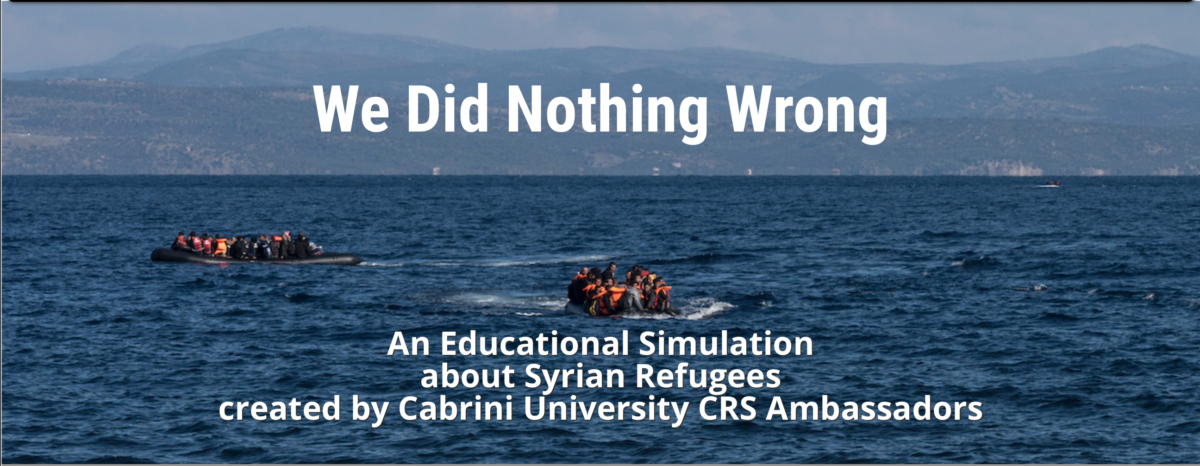Navigate the site: 1. Intro … 2. Learn … 3. Plan … 4. Reflect … 5. Advocate
Learn
Education needed: The Syrian refugee crisis has received a lot of attention, but the public may not know what has caused it. We see much in the media about refugees fleeing to Europe and Middle Eastern countries. Many do not understand the differences between the refugee crisis in neighboring countries vs. the U.S. role. And so it is important to find out about the conditions of flight and then what happens in neighboring countries. Finally, there is much misunderstanding about the role of the United States in refugee care and resettlement. There is an overwhelming amount of sometimes confusing information. We have curated a list of reliable resources (often from CRS or other groups directly involved) that we found helpful.
We divided up our CRS Ambassadors to become knowledgeable about specific aspects. They then would teach each other.
1) Causes of and Facts about the Syrian Refugee Crisis
First, the causes of the Syrian conflict are difficult and evolving. This brief Vox article and video, “The war in Syria, explained,” is a good start to grasp the complexity.

Second, everyone should view this 1-hour Frontline video of four children surviving in war-torn Aleppo, and their escape to a new life in Germany. This video personalizes who refugees are. Understanding what life must be like for children still in the midst of war is important.

Additional reading: What Life is Like for the Children of War-Torn Aleppo.
A Google map shows the countries bordering Syria where people flee to first: Lebanon and the Mediterranean Sea to the west, Turkey to the north, Iraq to the east, Jordan to the south, and Israel to the southwest. Lebanon, Jordan, Turkey, and Iraq have absorbed the bulk of the refugees. Turkey has absorbed the most, three of the five million registered in the region. By contrast, the United States, accepted so few refugees in 2022, for examplee, it is not even listed. (We accepted just 4556 refugees!)
Many people have objections to helping refugees. Here is how CRS addresses these common misunderstandings.
2) The Journey
Some flee by sea and then over land, others by land to neighboring countries. Both choices are perilous.
By sea: The terrible sea voyage has been documented often. Here is People of Nowhere, a 2-minute video.

Two Cabrini University student reporters interviewed a mother and daughter about their experience first by sea and then over land.

The New Yorker has an excellent 6-part documentary of the journey. The third part is about a land journey.
3) Life as a refugee
The generosity of receiving countries is important to stress. CRS and its partners are active throughout the Middle East assisting refugees.
A great movie to show at a CRS Ambassador meeting is Salam Neighbor (“Hello Neighbor”). Link is to Apple TV. Made by two recent college students, it is available on Netflix and elsewhere and documents their one-month stay in a refugee camp near Syria.
4) Key facts
- Quick facts from Mercy Corps and World Vision.
5) The Refugee Process
This video clears up a number of misconceptions about the refugee process. It’s by the Department of Homeland Security. Here is how CRS addresses common misunderstandings.
6) Other CRS Resources
CRS has an extensive library of short films and articles for additional information about its work with Syrian refugees.
